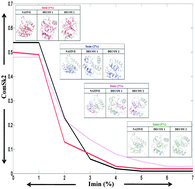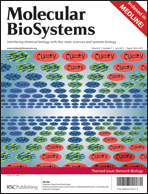Protein structure space is believed to consist of a finite set of discrete folds, unlike the protein sequence space which is astronomically large, indicating that proteins from the available sequence space are likely to adopt one of the many folds already observed. In spite of extensive sequence–structure correlation data, protein structure prediction still remains an open question with researchers having tried different approaches (experimental as well as computational). One of the challenges of protein structure prediction is to identify the native protein structures from a milieu of decoys/models. In this work, a rigorous investigation of Protein Structure Networks (PSNs) has been performed to detect native structures from decoys/models. Ninety four parameters obtained from network studies have been optimally combined with Support Vector Machines (SVM) to derive a general metric to distinguish decoys/models from the native protein structures with an accuracy of 94.11%. Recently, for the first time in the literature we had shown that PSN has the capability to distinguish native proteins from decoys. A major difference between the present work and the previous study is to explore the transition profiles at different strengths of non-covalent interactions and SVM has indeed identified this as an important parameter. Additionally, the SVM trained algorithm is also applied to the recent CASP10 predicted models. The novelty of the network approach is that it is based on general network properties of native protein structures and that a given model can be assessed independent of any reference structure. Thus, the approach presented in this paper can be valuable in validating the predicted structures. A web-server has been developed for this purpose and is freely available at http://vishgraph.mbu.iisc.ernet.in/GraProStr/PSN-QA.html.

You have access to this article
 Please wait while we load your content...
Something went wrong. Try again?
Please wait while we load your content...
Something went wrong. Try again?


 Please wait while we load your content...
Please wait while we load your content...